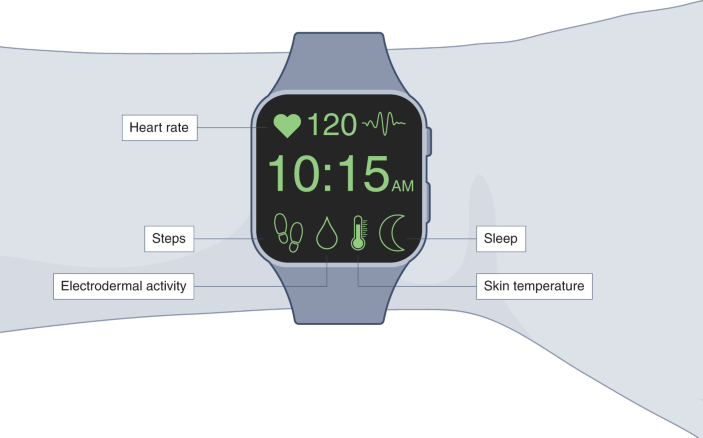Randomized controlled trials are the cornerstone of medical research, but they have been less commonly used to study how behavioral changes can improve health. The pandemic has shown that such large-scale trials can be conducted — for example, to show the efficacy of mask wearing.
One such study tested interventions to promote mask wearing across 600 villages in rural Bangladesh. As well as measuring efficacy, the team wanted to test interventions that could be easily adapted and scaled in other countries.
A range of interventions were tested, each of which was supported by previous research and can work in certain circumstances, says behavioral scientist Neela Saldanha at the Yale Research Initiative on Innovation and Scale, who was involved with the research. Mask wearing tripled in the treatment villages, compared with its use in untreated villages, but some interventions had no effect, including text reminders and financial and non-financial incentives.
This research showed that you could conduct a highly ambitious, large-scale study within a short time frame. However, it requires a different way of working, says Saldanha.
“I think the challenge is to do it at scale in a community setting, because unfortunately in the pandemic it’s not just an individual behavior change. It’s a total community behavior change,” says Saldanha. The worldwide team had to conduct the study in parallel, implementing interventions in some villages in Bangladesh while simultaneously using different interventions at other study sites in the country.
There are benefits to putting in the resources to test multiple interventions in parallel, either in the same country or across multiple countries, instead of testing interventions in succession. But this requires coordination and financial support. Funding to fight SARS-CoV-2 has made large-scale behavioral studies such as this possible.
“If you’re in the fortunate position to have resources to examine multiple alternatives, I think two things: one is we know about sunk costs, or at what point do we abandon an alternative,” says Saldanha. A ‘sunk cost’ represents the time and resources lost in trying an intervention that proves to be unsuccessful. “And the second one is, how do we make sure we are not overestimating or cherry picking at the end of the analysis.”
Randomized trials of behavioral interventions require parallel processing, taking risks, working in teams, and using the time pressure in a positive way. However, the results may not always be transferable to other contexts. There is no guarantee that interventions that work in one country will work in others, but the results can inform decision-making about which interventions could receive the most focus and what others could be worth trying in a new context, says Saldanha.
Although it can be a boon to be able to conduct an ambitious study in a short time, it is not without caveats. There is a danger in trying every possible intervention when you have a large sample size and the resources. Saldanha notes that for each behavioral intervention, there should be a clear reason for its inclusion and an explanation of what results are expected. And if an intervention does not seem to work, researchers should think about why that might be.
Trials of behavioral interventions are being carried out in other fields of health and medicine — and bigger seems to be better. A recent ‘megastudy’ of interventions to promote physical exercise involved more than 60,000 participants and was run by 30 scientists at 15 institutions. Of 54 different 4-week programs, 45% of the interventions increased visits to the gym, but only 8% led to significant and measurable behavior change after the 4-week intervention ended. Notably, impartial experts failed to predict which interventions would work, which shows the importance of randomized trials.
Trials are also ongoing to assess the impact of interventions to reduce the risk of heart disease, and to increase medication compliance in patients with cancer.
Genomic surveillance
Genome sequencing has been an essential tool for the surveillance of SARS-CoV-2, to discover and track new variants such as Delta and Omicron. Portable desktop sequencers have made it easier to gather genomic data, and companies such as Oxford Nanopore have made it possible to obtain DNA sequences rapidly.
An open-science approach has also been key, in terms of both standardized protocols and kits, and the sequences themselves, which are immediately shared globally. “It’s important to know what types of variation the virus is acquiring,” says Jianjun Liu of the Genome Institute of Singapore. “People use that variation information to predict so-called severity of disease,” as well as transmissibility.
The use of standard protocols and shared kits means that each part of the process is the same for everyone, wherever they are in the world, from extraction to the uploading of sequence data. If the data are not properly curated or quality-controlled, says Liu, the information may not be accurate, and that can mislead downstream effort to understand the virus or develop vaccines.
A key part of genomic surveillance is a database that is reliable and accessible. Data sharing for viral sequences happened before the pandemic, but it has now gone into overdrive. Without an efficient platform for sharing genome sequences, the data are just buried somewhere, says Liu.
Luckily, the data-sharing initiative GISAID existed for many years before the pandemic as a database for influenza virus genomes and was repurposed to serve as a platform for SARS-CoV-2 sequences. “You have a centralized repository of information,” Liu tells Nature Medicine. And ideally, he continues, everyone has free access, as is the case with GISAID. In addition, the information technology platform that supports the data sharing needs to be robust, to allow many users to access it simultaneously.
Widely sharing genome sequences can pose security and privacy challenges — something not generally an issue for viral sequences, but a potential problem for human DNA. Nonetheless, Liu hopes this kind of platform can exist for the sharing of human sequence information, because it would help advance precision medicine.
Some such databases already exist. In Sweden, the nationwide database SCIFI-PEARL links data from people who have been diagnosed with COVID-19 with data from an uninfected control group, and includes data on a wide range of other health conditions, including asthma and cardiovascular disease. On a larger scale, COVerAGE-DB is an open-access, global database of coronavirus testing, cases and deaths from 108 countries. These databases, used extensively during the pandemic, are likely to outlive it.
Drug discovery
Drug discovery is a long and expensive process, with new compounds taking many years to make it through initial selection and clinical trials and finally to market. During the pandemic, some researchers turned to DNA-encoded libraries, in which small molecules are filed away for reference, in an attempt to find anti-viral agents, but such chemical libraries may have uses beyond the pandemic.
DNA-encoded chemical libraries were proposed in 1992 and then were put into practice in the early 2000s. There are many ways to build a chemical library, says Jörg Scheuermann, professor of chemistry and applied biosciences at ETH Zurich, but it has to be done well, with special focus on the chemistry, the novel scaffold and the encoding.
Once the libraries are built, they can then be used to find small-molecule ligands for any target protein of choice, including viral proteins from SARS-CoV-2. The main requirement is that the target protein must be expressed in vitro in a stable form, to allow normal affinity-based selection, says Scheuermann.
DNA-encoded chemical libraries have been used to develop drugs that target the SARS-CoV-2 protease Mpro and non-structural proteins, says Scheuermann, although none are approved for use in humans.
“The fastest remedy for the coronavirus for sure was the development of vaccinations, also antibodies,” says Scheuermann. But there is still a role for small molecules, as shown by the efficacy of molnupiravir (Lagevrio; Merck and Ridgeback) and nirmatrelvir plus ritonavir (Paxlovid; Pfizer) in treating COVID-19.
In the future, small-molecule drugs could be administered as a spray that would expose the relevant organs, such as the lungs, to the treatment more directly. The only problem is you need to have very specific high-affinity small molecules, and that is not so easy, says Scheuermann.
One lesson from the COVID-19 pandemic has been that although DNA-encoded chemical libraries can speed up the drug-discovery phase, few new therapeutic agents arrive quickly enough for such an urgent situation. The development of small molecules usually takes longer than that of monoclonal antibodies or vaccines, Scheuermann tells Nature Medicine.
But with a library of chemicals, all of the pre-clinical trial processes would be fairly quick: building the library, making selections against target proteins, and validation of the initial hits. It would come down to how effectively and quickly clinical trials could be conducted.
Scheuermann sees huge potential for small molecules to treat diseases beyond infections. His lab has identified a small-molecular inhibitor of placental alkaline phosphatase, expressed on various tumors of the female reproductive tract, which could be used to treat cancer. Such an approach could be used for many diseases, says Scheuermann — and pharmaceutical companies are starting to take notice.
Author information
Authors and Affiliations
Freelance writer, New York, NY, USA
Chia-Yi Hou

